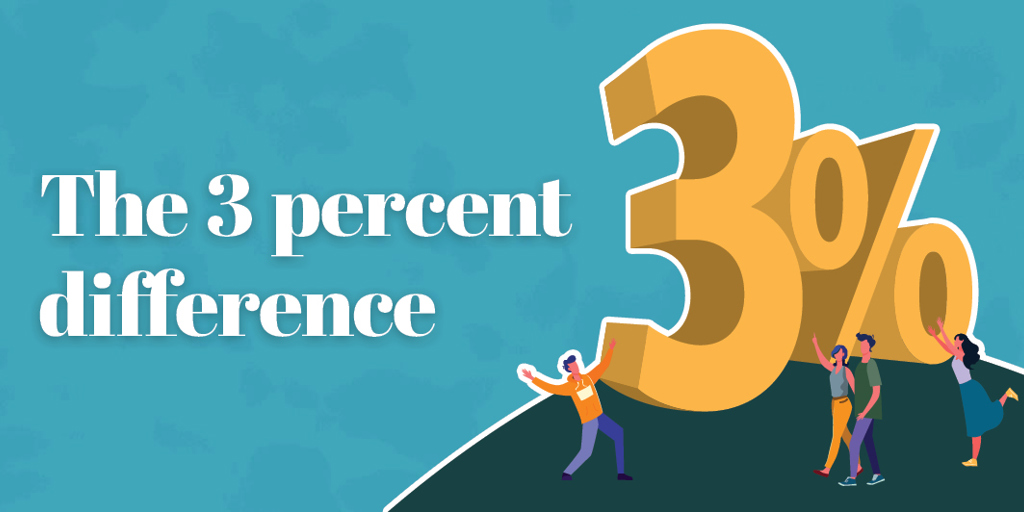


The 3 percent difference
The Employee Benefit Research Institute (EBRI) has teamed up with J.P. Morgan Asset Management to produce an interesting new study of the habits of saving for retirement.
EBRI has access to a database of 27 million 401(k) participants, and J. P. Morgan Chase has a database of 22 million customers. The overlaps were extracted and culled for various screens, resulting in a detailed financial picture for 10,000 households that have meaningful participation in a 401(k) plan. Three groups were segmented: the bottom 25 percent of savers, the middle 50 percent of savers, and the top 25 percent. Here are some of the findings:
Three groups were segmented: the bottom 25 percent of savers, the middle 50 percent of savers, and the top 25 percent. Here are some of the findings:
- The top savers, who start out saving 8.5% of their salary and are saving 14.7 percent by the time they are 60, are also the most highly compensated. No surprise.
- Middle savers do not increase their saving rate over time so much, starting at 5.1% of salary and ending at 6.4 percent.
- Low savers begin at 2.0% of salary and end at 3.1%, so they are roughly three percentage points below the middle savers throughout their careers.
- Because of that 3 percent difference, middle savers accumulate twice as much for retirement as the low savers, 2.1 times their annual salary versus 1.1 times. (High savers end with 4.1 times their salary.)
- Surprisingly, the compensation for middle and low savers is roughly the same throughout their careers. Both groups in the study earned $50,000 annually at age 50.
It’s easy to see why those who are more highly compensated can save more, but what accounts for the difference between the low and middle group? Spending. The lower savers spend more on housing—they may live in areas of expensive homes or high rents. They spend more on transportation if they have moved far from their employer to find more affordable shelter. They also spend more on food and drink. The study did not determine if that was because they had larger families or simply went out to restaurants more often. Interestingly, the low savers spent less on travel than the other groups.
The study underscores the very important role of employer-sponsored retirement savings plans in building retirement capital. After accounting for federal, state, and local taxes and health insurance premiums, as well as the previously mentioned spending categories, there was no money left unaccounted for in the low- and middle-savers groups.
(September 2020) © 2020 M.A. Co. All rights reserved.
Recent Articles
Join our e-newsletter
Sign up for our e-newsletter to get new content each month.






















